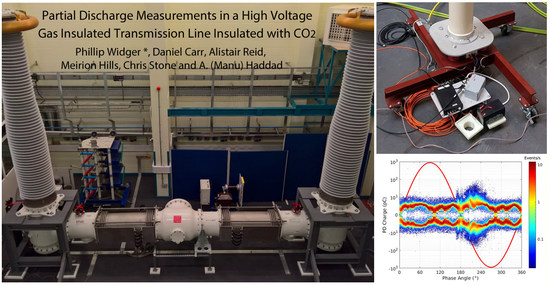Partial Discharge Measurements in a High Voltage Gas Insulated Transmission Line Insulated with CO2
Abstract
1. Introduction
2. Practical Test Arrangement and Methods
Frequency integration = 80 kHz ± 50 kHz.
Frequency integration = 400 MHz ± 750 kHz.
3. Results
3.1. Partial Discharge Measurement—Clean System
3.2. Partial Discharge Measurement—Particle-Contaminated System
3.3. UHF Partial Discharge Measurement—Clean and Particle-Contaminated System
4. Discussion and Conclusions
Author Contributions
Funding
Acknowledgments
Conflicts of Interest
References
- Widger, P.; Haddad, A. Evaluation of SF6 leakage from gas insulated equipment on electricity networks in Great Britain. Energies 2018, 11, 2037. [Google Scholar] [CrossRef]
- Myhre, G.; Shindell, D.; Bréon, F.M.; Collins, W.; Fuglestvedt, J.; Jianping, H.; Koch, D.; Lamarque, J.F.; David, L.; Mendoza, B.; et al. Anthropogenic and Natural Radiative Forcing; Cambridge University Press: Cambridge, UK, 2013. [Google Scholar]
- Intergovernmental Panel on Climate Change (IPCC). Working Group I Contribution to Fourth Assessment Report of the Intergovernmental Panel on Climate Change; Cambridge University Press: Cambridge, UK, 2007. [Google Scholar]
- Li, Y.; Zhang, X.; Zhang, J.; Xiao, S.; Xie, B.; Chen, D.; Gao, Y.; Tang, J. Assessment on the toxicity and application risk of C4F7N: A new SF6 alternative gas. J. Hazard. Mater. 2019, 368, 653–660. [Google Scholar] [CrossRef] [PubMed]
- Beroual, A.; Haddad, A. Recent Advances in the Quest for a New Insulation Gas with a Low Impact on the Environment to Replace Sulphur Hexafluoride (SF6) Gas in High-Voltage Power Network Applications. Energies 2017, 10, 1216. [Google Scholar] [CrossRef]
- Rabie, M.; Franck, C.M. Assessment of Eco-friendly Gases for Electrical Insulation to Replace the Most Potent Industrial Greenhouse Gas SF6. Environ. Sci. Technol. 2018, 52, 369–380. [Google Scholar] [CrossRef] [PubMed]
- Zhang, X.; Li, Y.; Xiao, S.; Tang, J.; Tian, S.; Deng, Z. Decomposition Mechanism of C5F10O: An Environmentally Friendly Insulation Medium. Environ. Sci. Technol. 2017, 51, 10127–10136. [Google Scholar] [CrossRef] [PubMed]
- Widger, P.; Haddad, A.; Griffiths, H. Breakdown performance of vacuum circuit breakers using alternative CF3I-CO2 insulation gas mixture. IEEE Trans. Dielectr. Electr. Insul. 2016, 23, 14–21. [Google Scholar] [CrossRef]
- Widger, P.; Griffiths, H.; Haddad, A. Insulation strength of CF3I-CO2 gas mixtures as an alternative to SF6 in MV switch disconnectors. IEEE Trans. Dielectr. Electr. Insul. 2018, 25, 330–338. [Google Scholar] [CrossRef]
- Seeger, M.; Avaheden, J.; Pancheshnyi, S.; Votteler, T. Streamer parameters and breakdown in CO2. IOP J. Phys. D Appl. Phys. 2016, 50, 015207. [Google Scholar] [CrossRef]
- Ohtsuka, S.; Onomoto, M.; Nishimura, T.; Matsumoto, S.; Shibuya, M.; Hikita, M. Insulation Properties of High-pressure CO2 Gas Under Existence of a Particle. In Proceedings of the European Power and Energy Systems (EuroPES 2003) Conference, Marbella, Spain, 3–5 September 2003; ACTA Press: Calgary, AB, Canada, 2003. [Google Scholar]
- Widger, P.; Haddad, A. Analysis of Gaseous By-Products of CF3I and CF3I-CO2 after High Voltage Arcing Using a GCMS. Molecules 2019, 24, 1599. [Google Scholar] [CrossRef] [PubMed]
- High-Voltage Switchgear and Controlgear—Part 203: Gas-Insulated Metal-Enclosed Switchgear for Rated Voltages above 52 kV, IEC/British Standard BS62271-203, 2012. Available online: https://shop.bsigroup.com/ProductDetail?pid=000000000030179469 (accessed on 1 March 2020).
- High-Voltage Switchgear and Controlgear—Part 204: Rigid Gas-Insulated Transmission Lines for Rated Voltage above 52 kV, IEC/British Standard BS62271-204, 2011. Available online: https://shop.bsigroup.com/ProductDetail?pid=000000000030205411 (accessed on 3 March 2020).
- High-Voltage Test Techniques—Part 60270: Partial Discharge Measurements, IEC/British Standard BS60270, 2001, +A1, 2016. Available online: https://shop.bsigroup.com/ProductDetail/?pid=000000000030228771 (accessed on 12 December 2019).
- BOC, Carbon Dioxide Materials Safety Data Sheet. 2017. Available online: https://www.boconline.co.uk/en/legacy/attachment?files=tcm:4410-39607,tcm:410-39607,tcm:10-39607 (accessed on 5 January 2020).
- Simply Bearings Ltd, 316 Stainless Steel Data Sheet. 2020. Available online: https://simplybearings.co.uk/shop/files/316.pdf (accessed on 10 January 2020).
- White, A.; Coventry, P.; Jones, G.R. Condition monitoring of high voltage equipment. In High Voltage Engineering and Testing, 2nd ed.; Ryan, H.M., Ed.; The Institution of Electrical Engineers: London, UK, 2001; pp. 642–643. [Google Scholar]
- Reid, A.J.; Judd, M.D.; Fouracre, R.A.; Stewart, B.G.; Hepburn, D.M. Simultaneous Measurement of Partial Discharges Using IEC60270 and Radio Frequency Techniques. IEEE Trans. Dielectr. Electr. Insul. 2011, 18, 444–455. [Google Scholar] [CrossRef]
- Irwin, T.; Lopez-Roldan, J.; Charlson, C. Partial Discharge Detection of Free Moving Particles in GIS by the UHF Method: Recognition Pattern Depending on the Particle Movement and Location. In Proceedings of the IEEE Power Engineering Society Winter Meeting (Cat. No.00CH37077), Singapore, 23–27 January 2000; ISBN 0-7803-5935-6. [Google Scholar] [CrossRef]
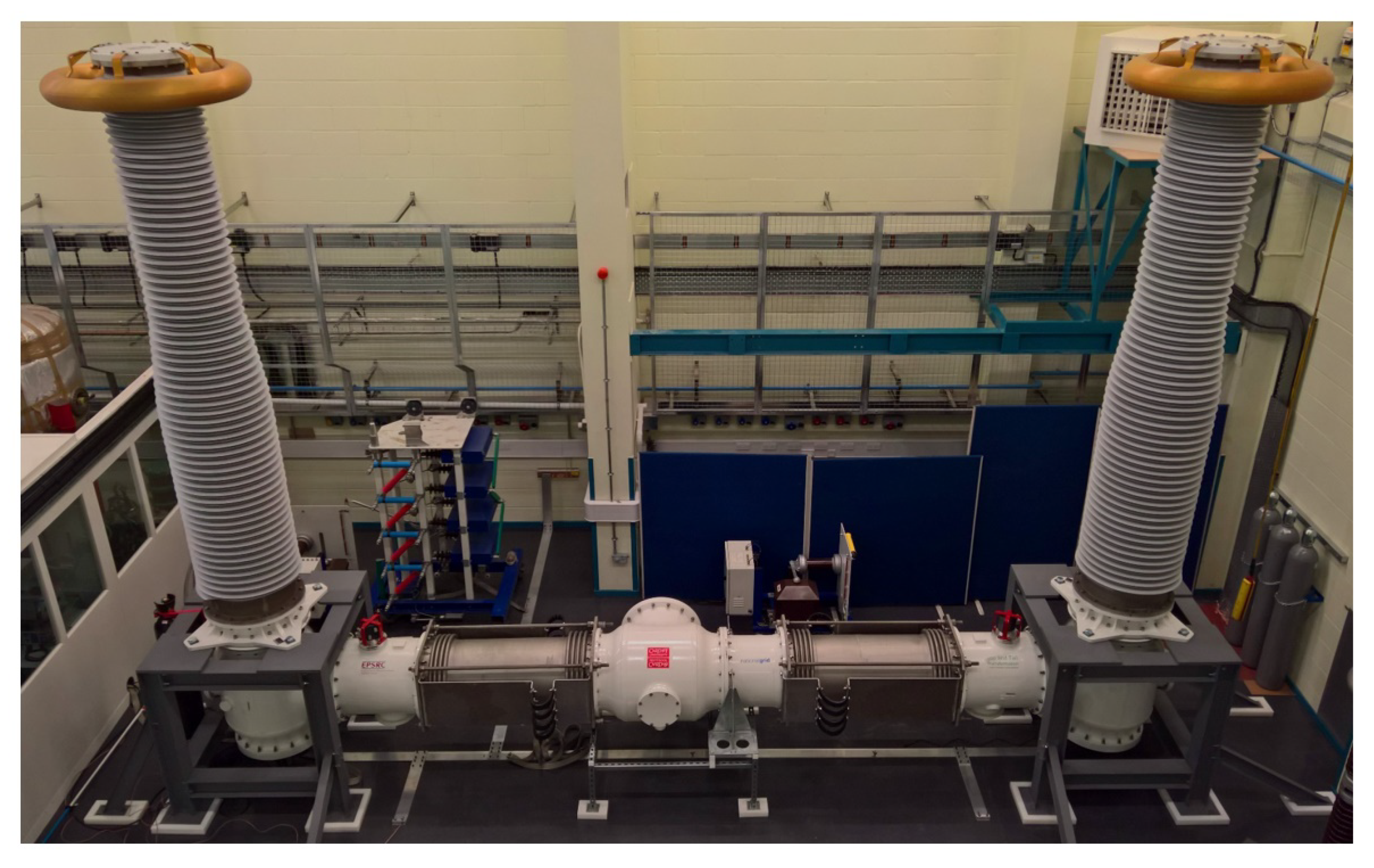
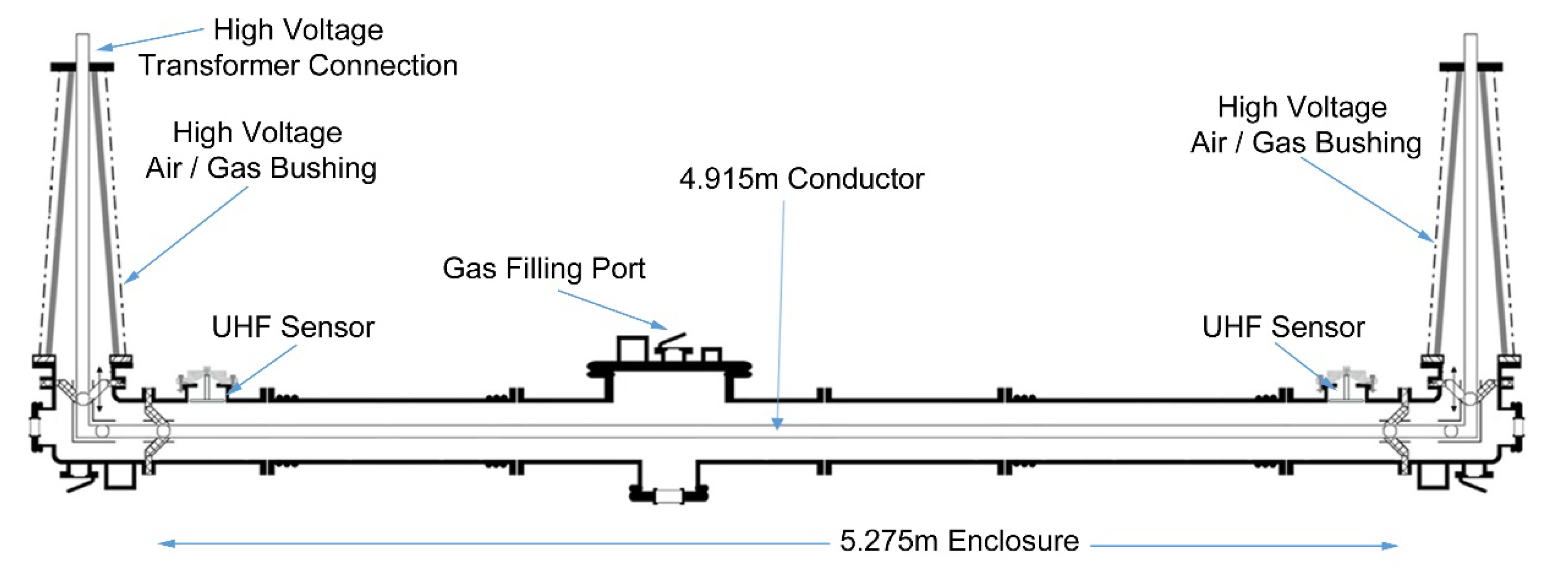

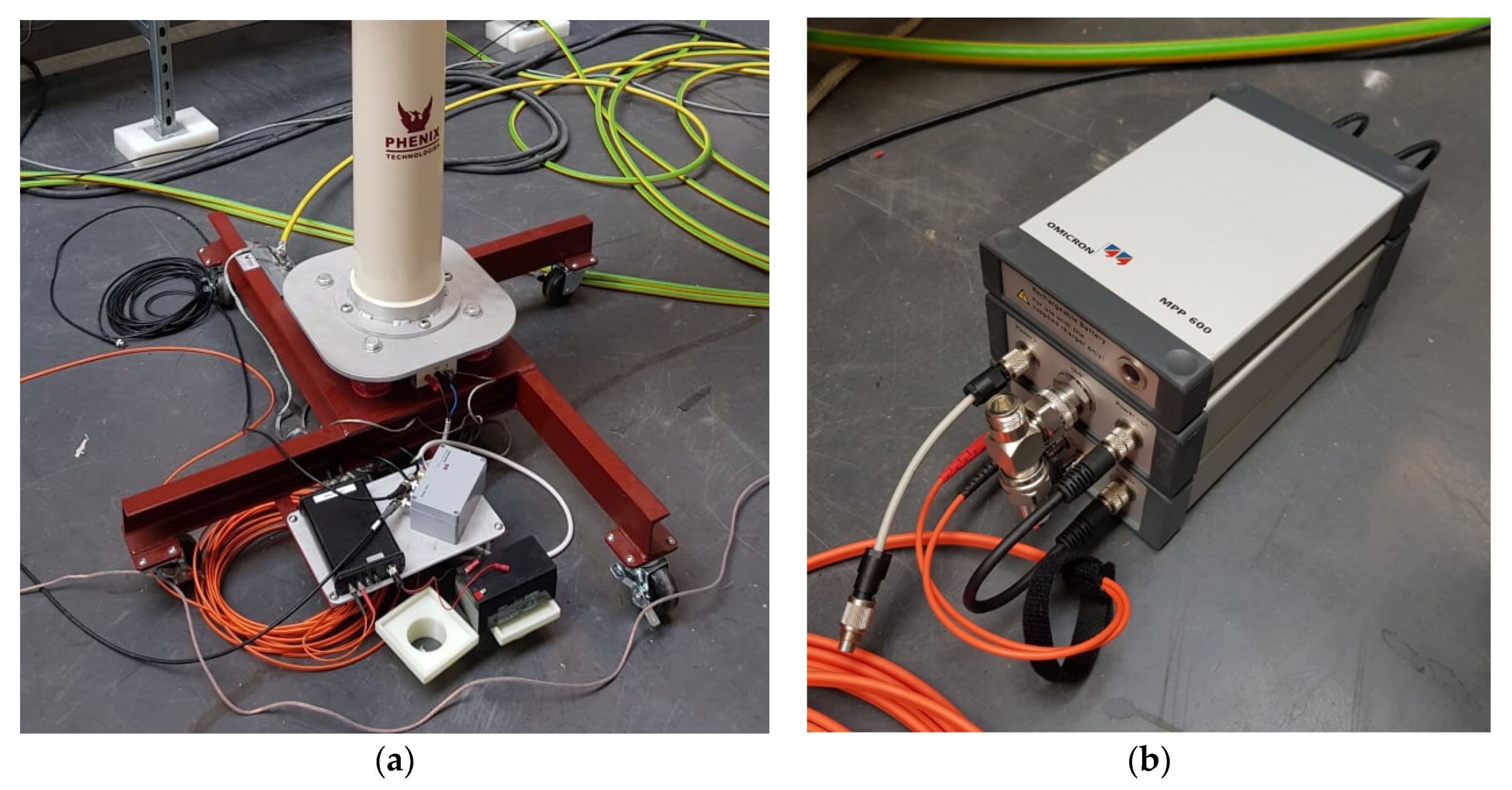
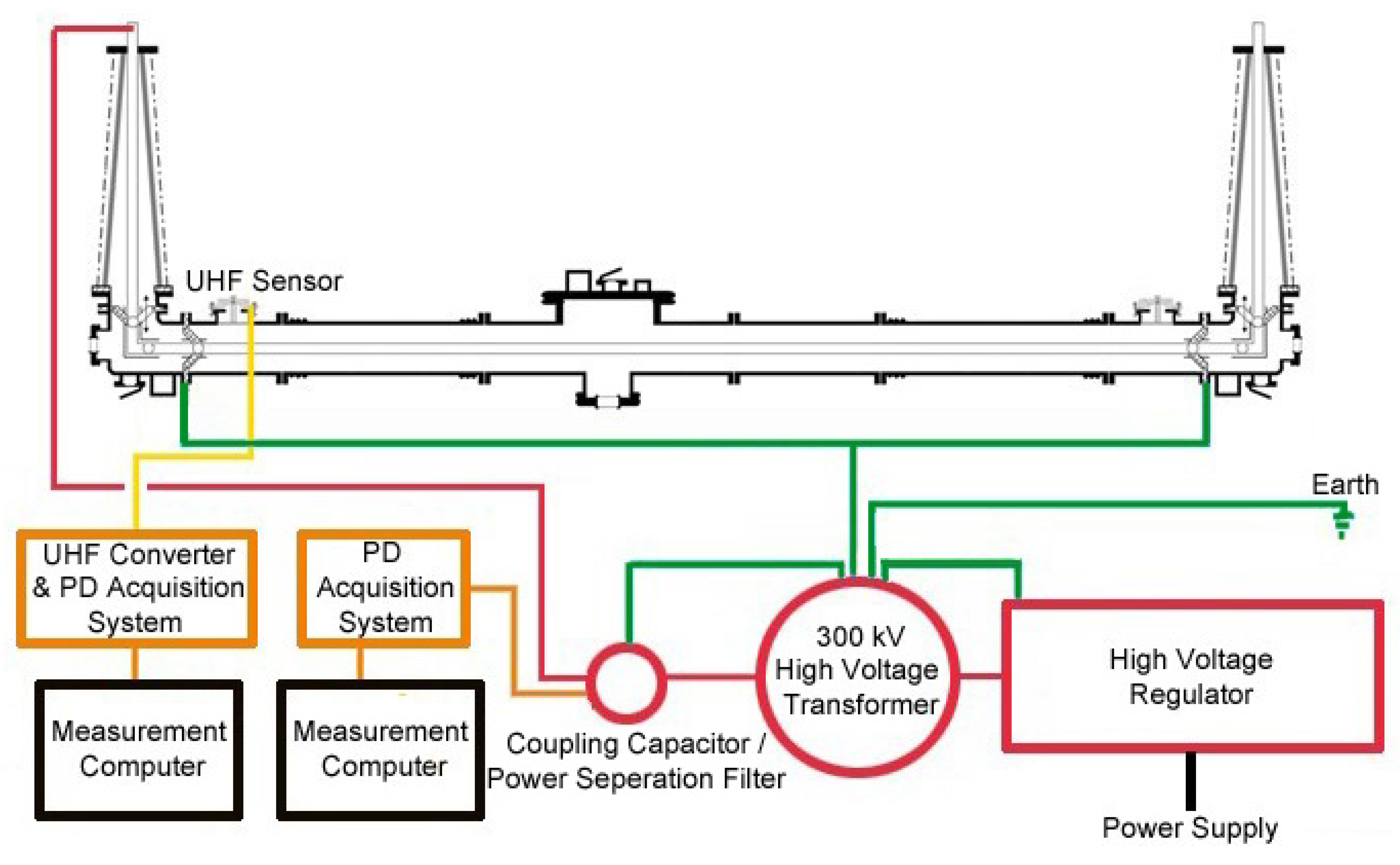
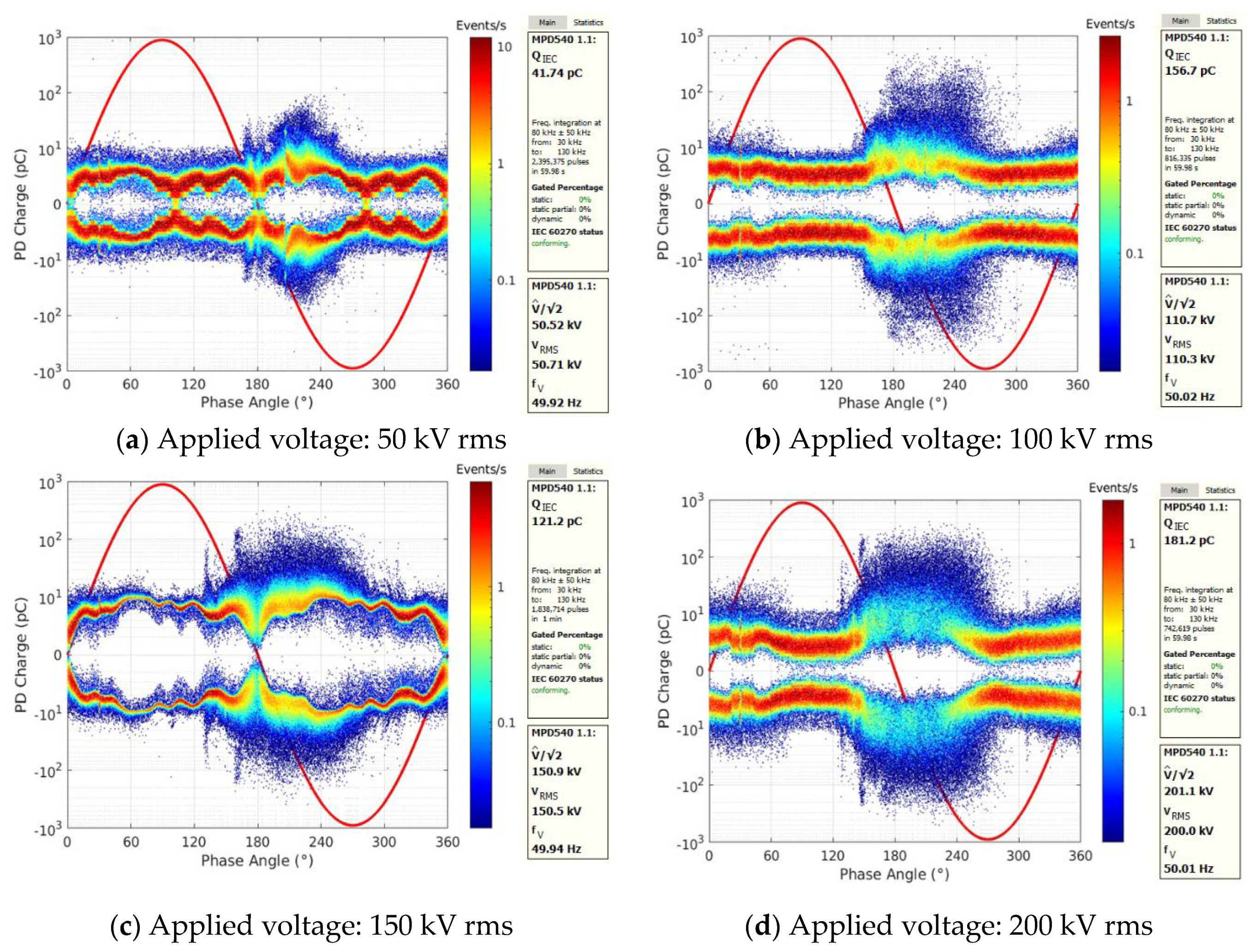
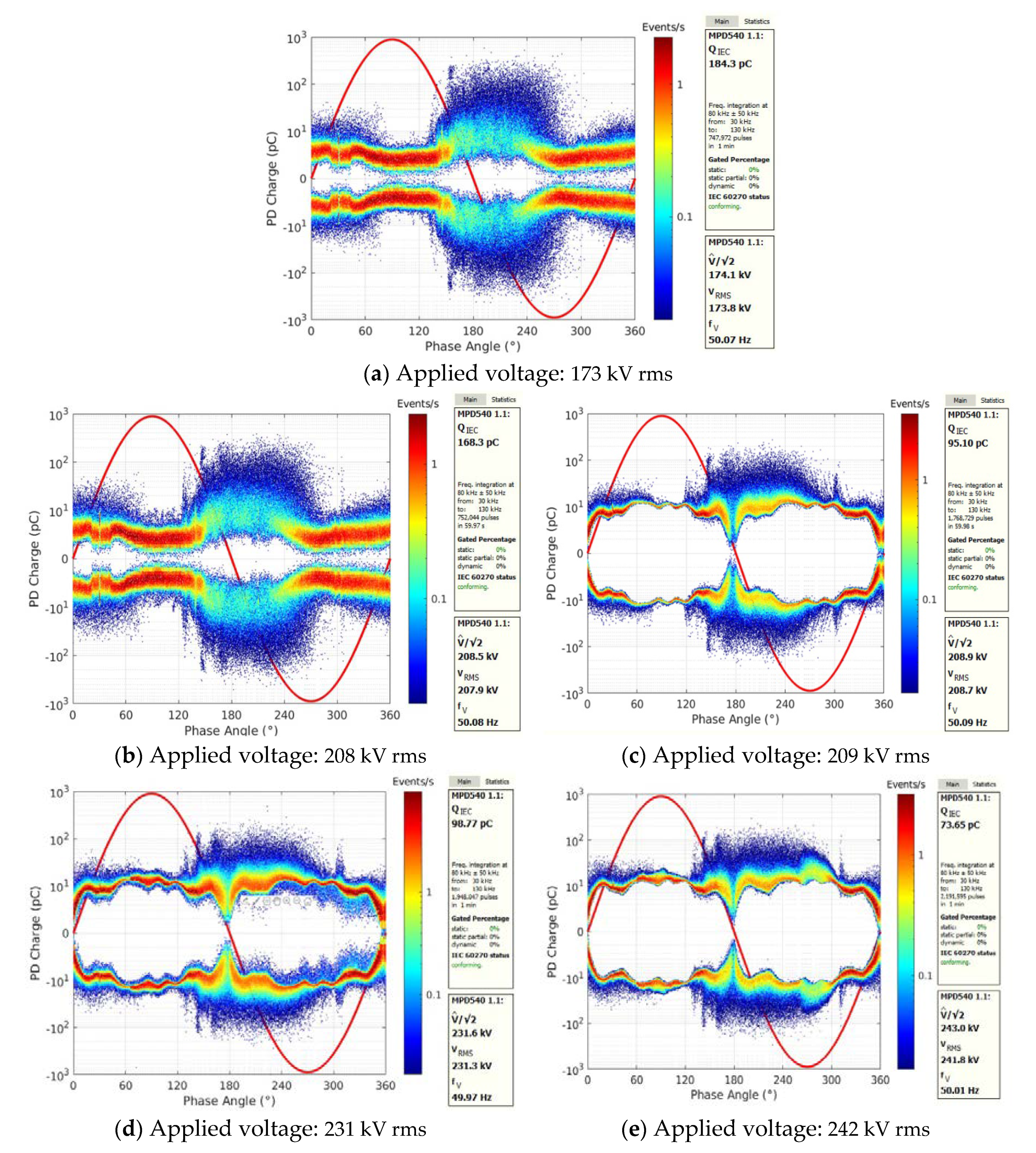
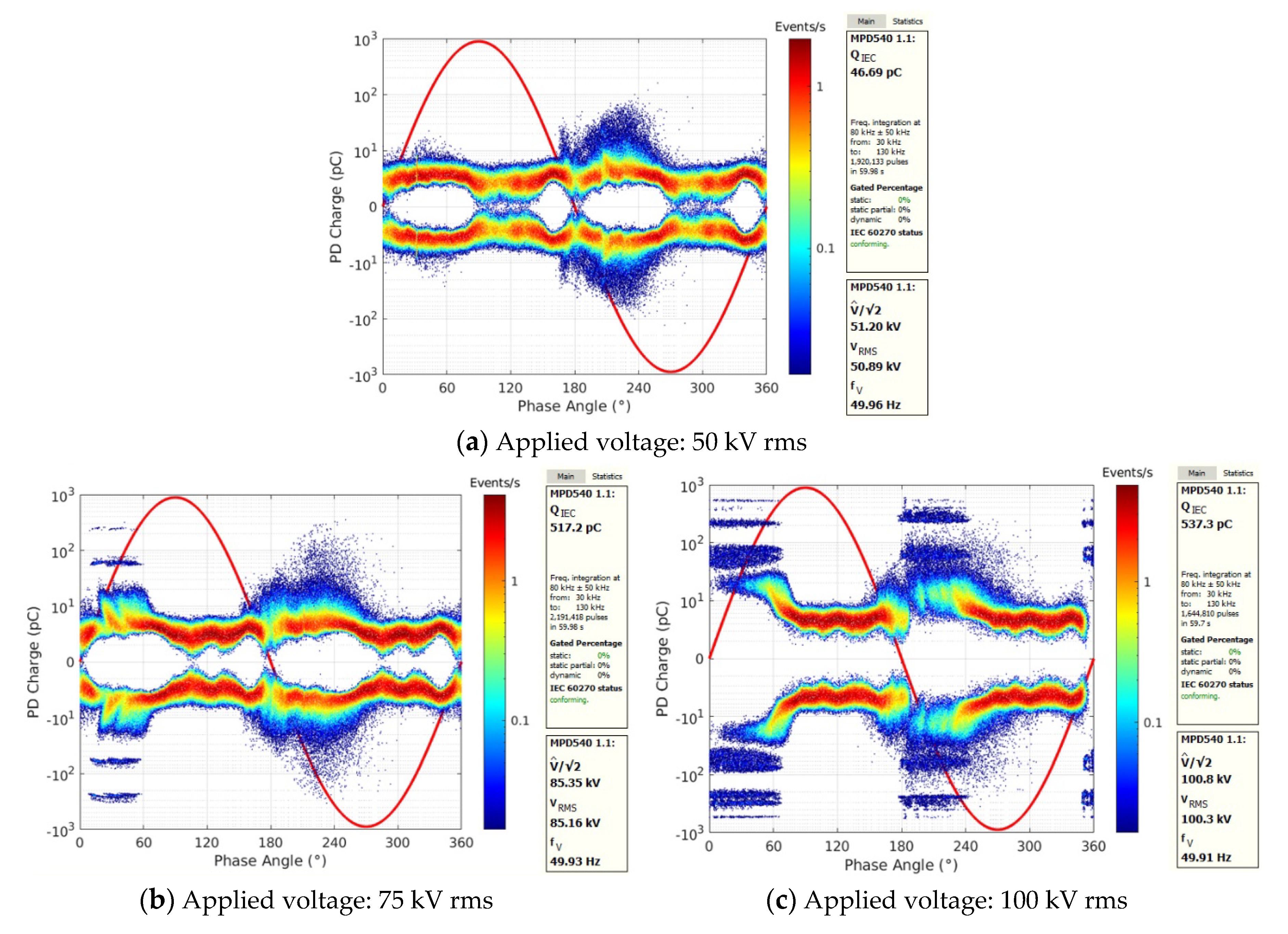
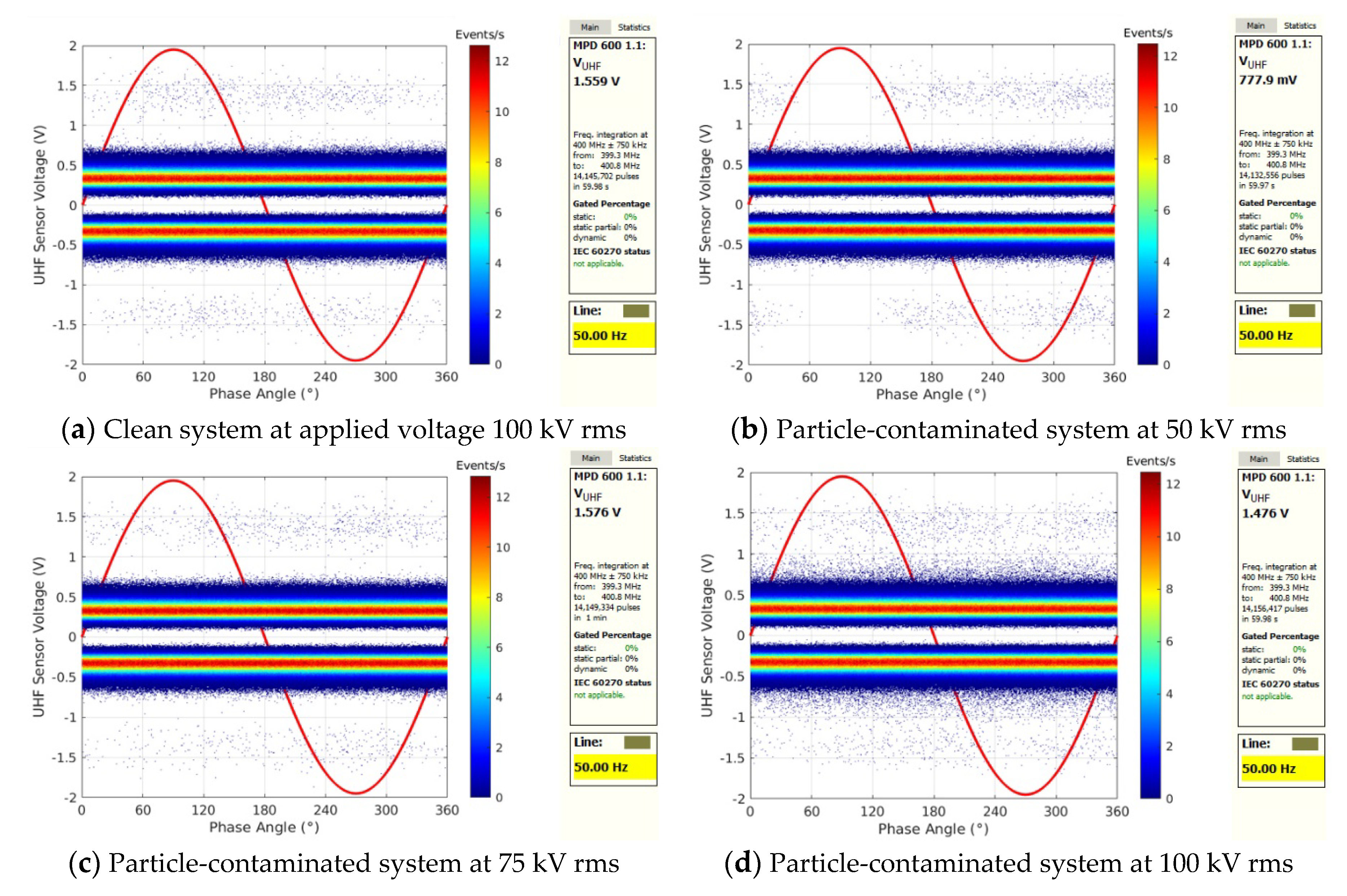
| Specification | Abbreviation | IEC 62271-203 (2003) Equipment Rating |
|---|---|---|
| Rated voltage/rated frequency | Ur/fr | 420 kV/50 Hz |
| Power frequency withstand voltage | Ud | 650 kV |
| Lightning impulse withstand voltage | Up | 1425 kV |
| Switching impulse withstand voltage | Us | 1050 kV |
| Rated auxiliary voltage | Ua | 125 V d.c. |
| Nominal current—busbars and bays | Ir | 4000 A |
| Short-time withstand current/duration | Ik/tk | 63 kA/1 s |
| Peak withstand current | Ip | 157 kA |
| CB SF6 gas pressure: filling/alarm/minimum (at 20 °C) | Pre/Pae/Pme | 7.5/6.8/6.5 bar |
| GIS SF6 gas pressure: filling/alarm/minimum (at 20 °C) | Pre/Pae/Pme | 3.5/3.1/2.9 bar |
| Ur Gas Insulated Line Demonstrator Rated Voltage | Uph-ea Nominal System Phase to earth Voltage | Upd-test Test Voltage for PD Measurement Uph-test (>1 min) |
|---|---|---|
| 300 kV | 173 kV | 208 kV |
| 362 kV | 209 kV | 251 kV |
| 400 kV | 231 kV | 277 kV |
| 420 kV | 242 kV1 | 291 kV |
© 2020 by the authors. Licensee MDPI, Basel, Switzerland. This article is an open access article distributed under the terms and conditions of the Creative Commons Attribution (CC BY) license (http://creativecommons.org/licenses/by/4.0/).
Share and Cite
Widger, P.; Carr, D.; Reid, A.; Hills, M.; Stone, C.; Haddad, A. Partial Discharge Measurements in a High Voltage Gas Insulated Transmission Line Insulated with CO2. Energies 2020, 13, 2891. https://doi.org/10.3390/en13112891
Widger P, Carr D, Reid A, Hills M, Stone C, Haddad A. Partial Discharge Measurements in a High Voltage Gas Insulated Transmission Line Insulated with CO2. Energies. 2020; 13(11):2891. https://doi.org/10.3390/en13112891
Chicago/Turabian StyleWidger, Phillip, Daniel Carr, Alistair Reid, Meirion Hills, Chris Stone, and A. (Manu) Haddad. 2020. "Partial Discharge Measurements in a High Voltage Gas Insulated Transmission Line Insulated with CO2" Energies 13, no. 11: 2891. https://doi.org/10.3390/en13112891
APA StyleWidger, P., Carr, D., Reid, A., Hills, M., Stone, C., & Haddad, A. (2020). Partial Discharge Measurements in a High Voltage Gas Insulated Transmission Line Insulated with CO2. Energies, 13(11), 2891. https://doi.org/10.3390/en13112891





